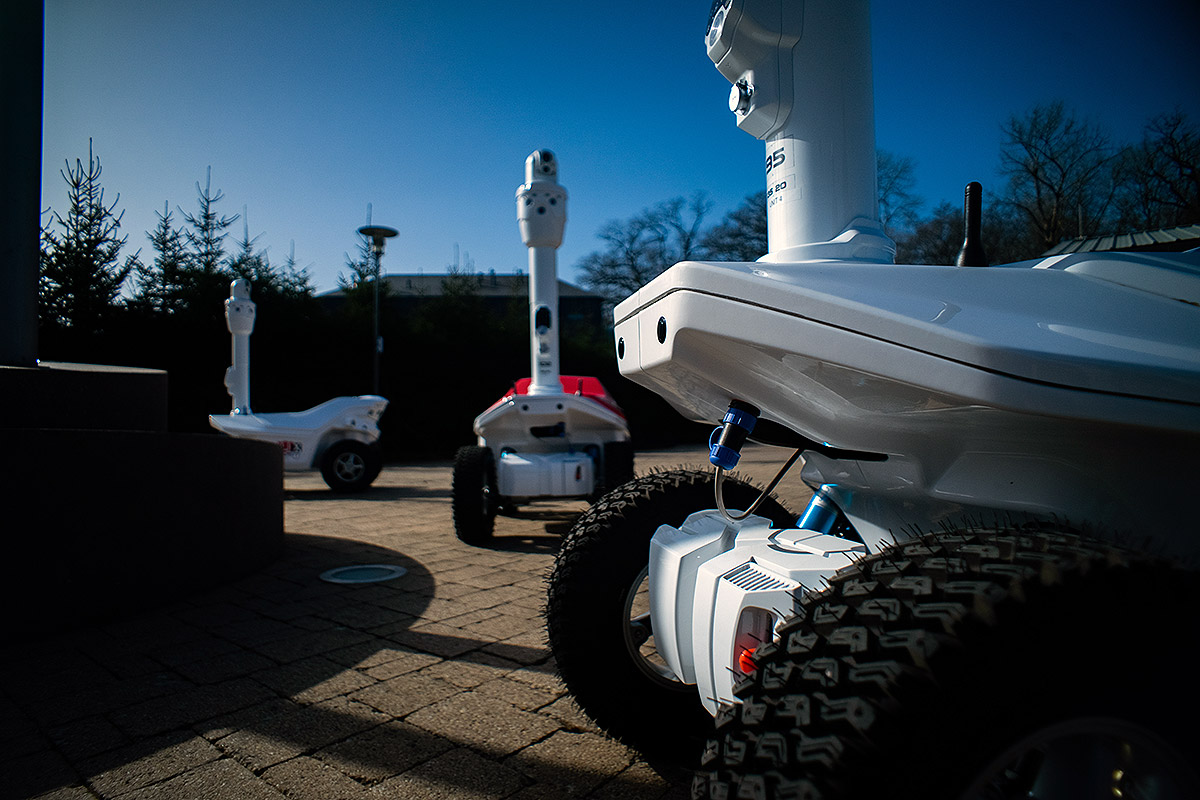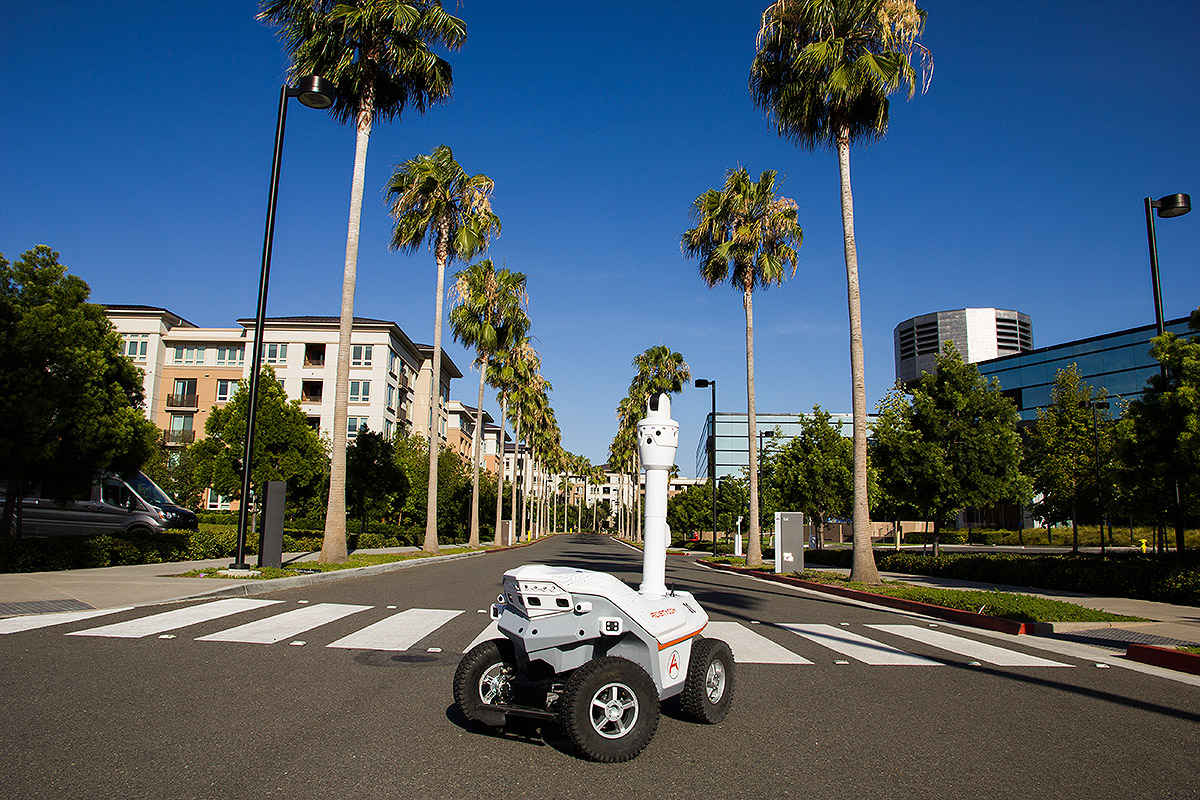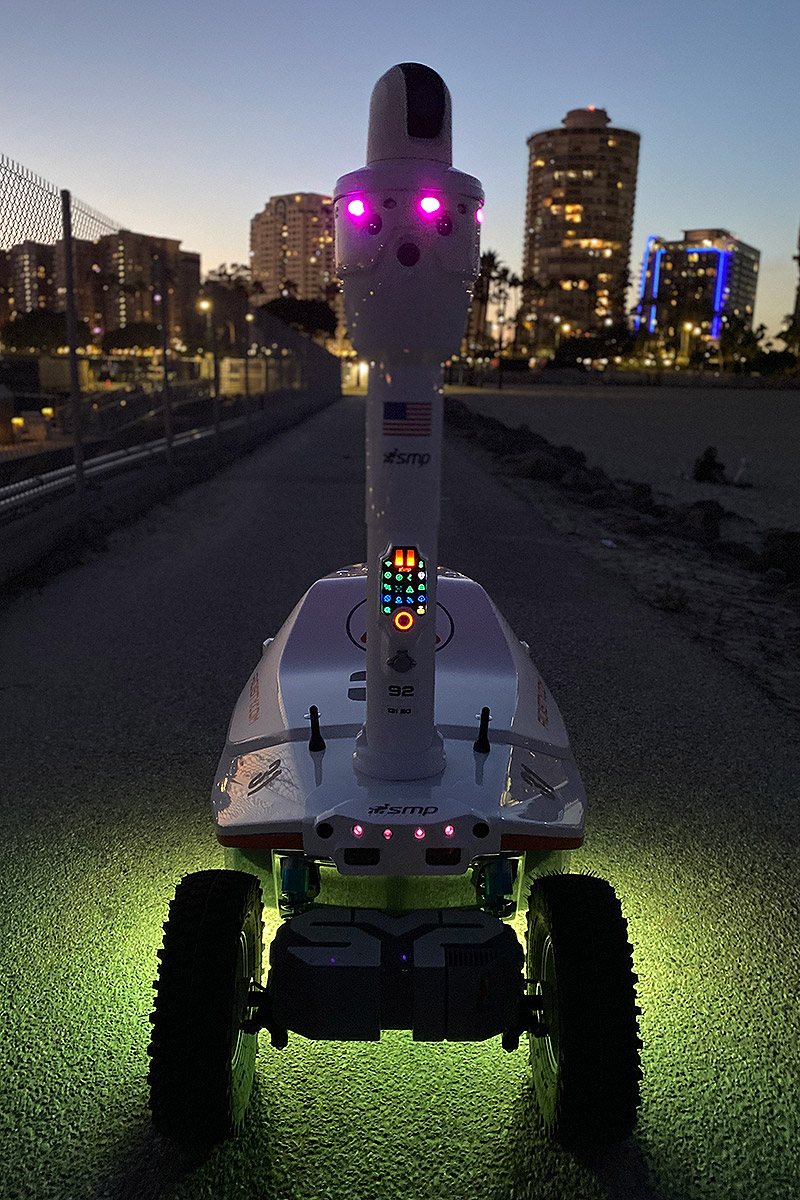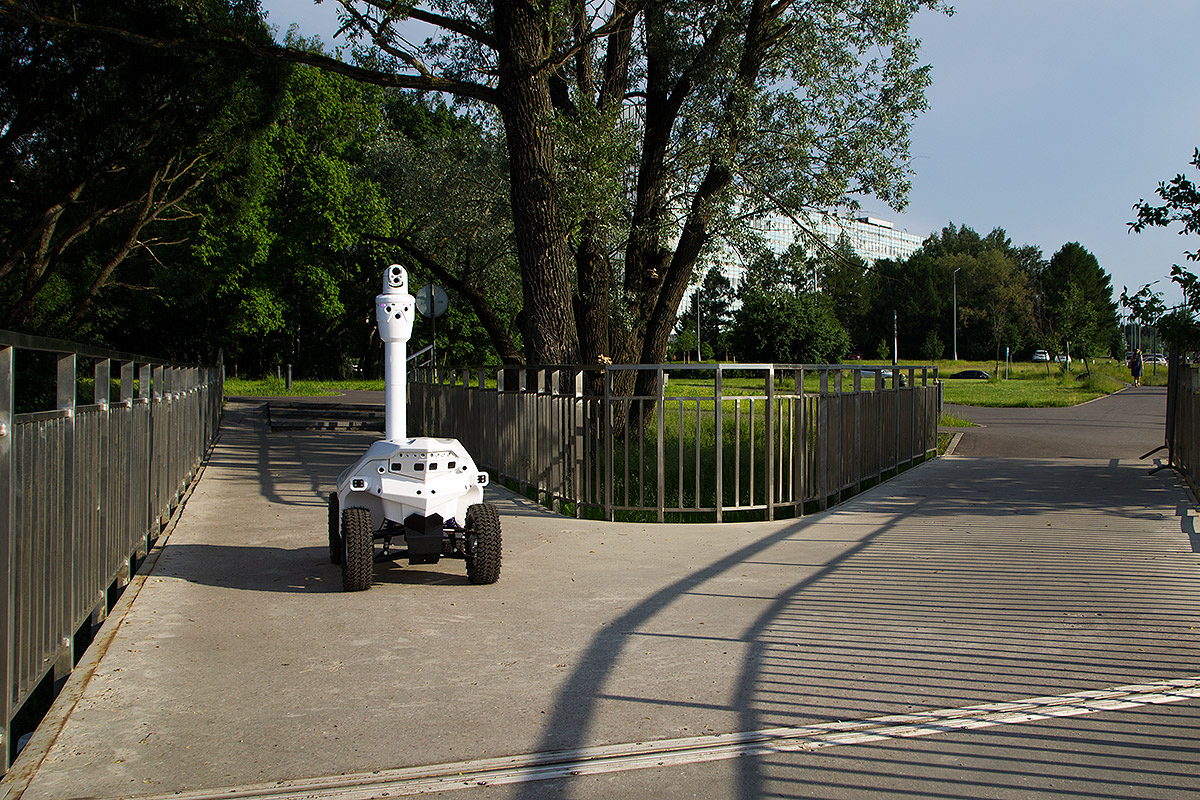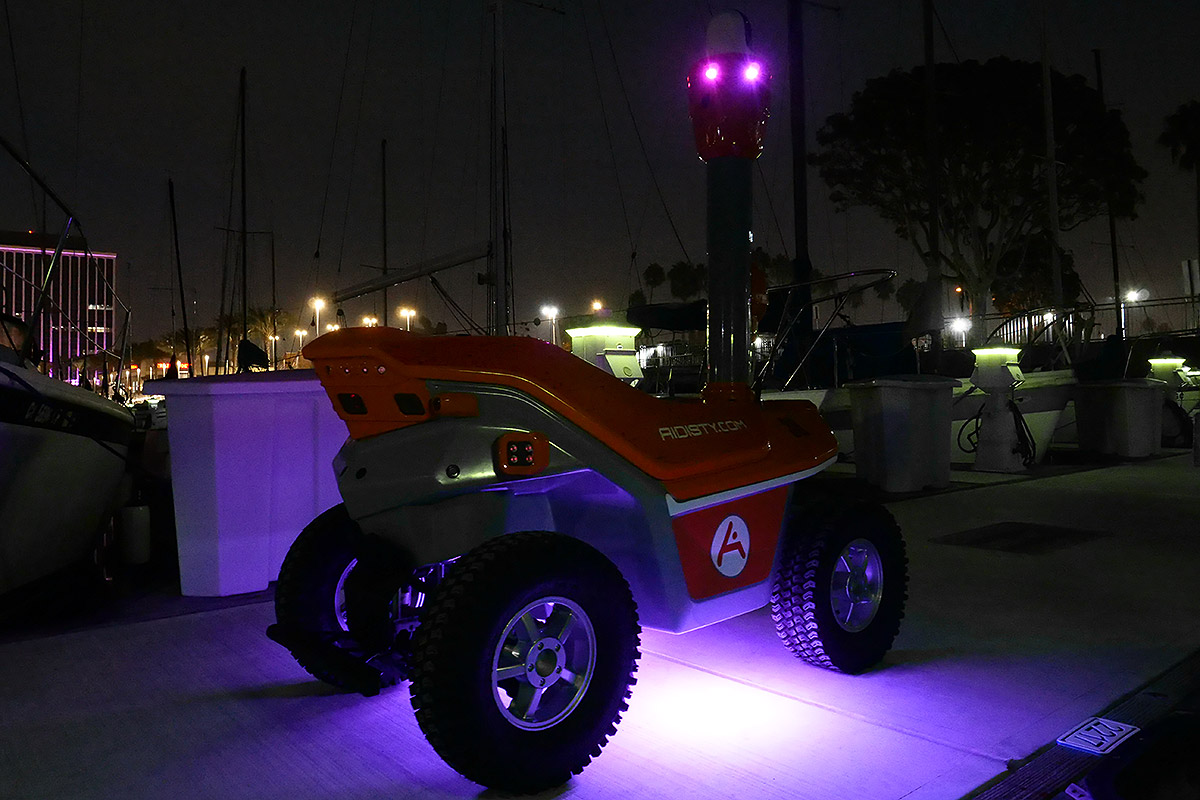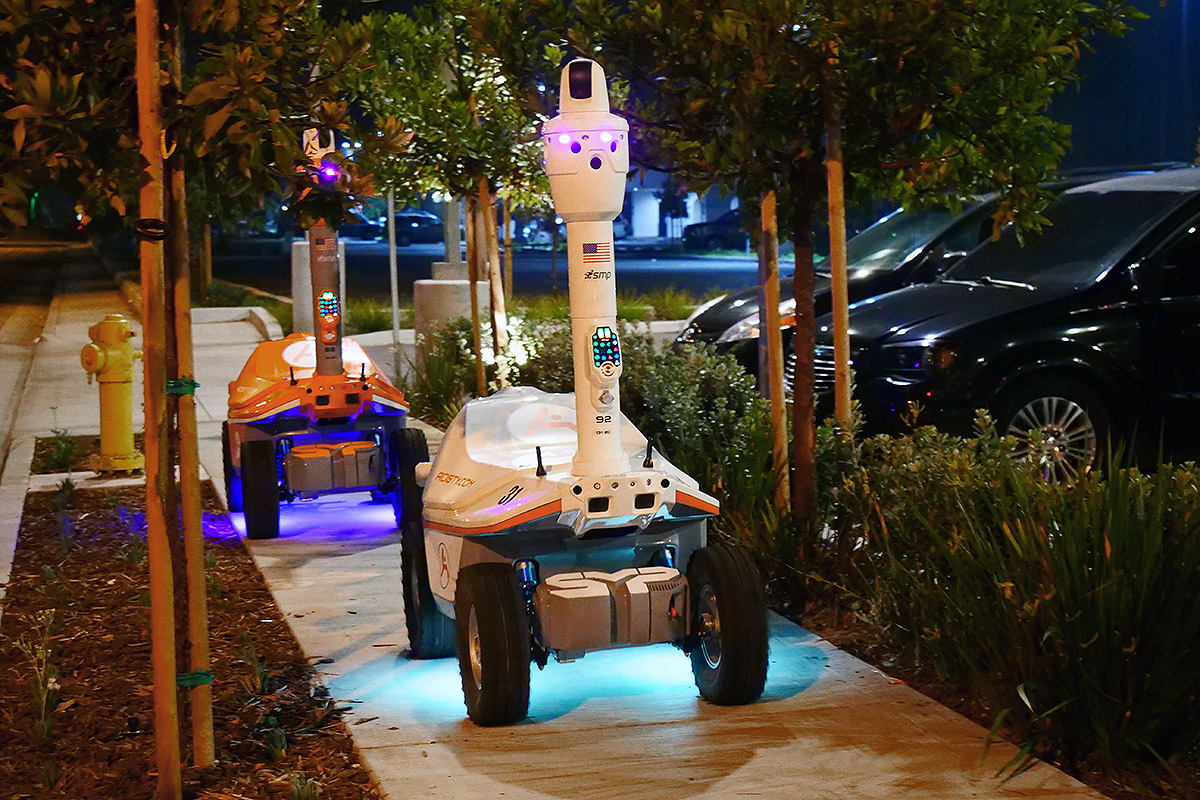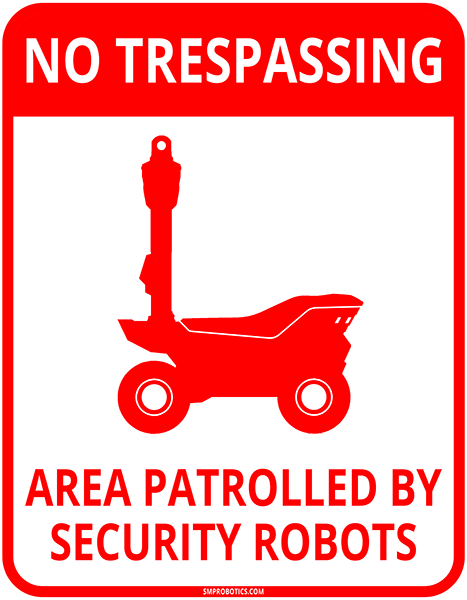Security Robots 2021 in the Coronavirus Era
New software enhances the autonomy of the group work of robots so much needed in the context of the COVID-19 pandemic.
A year of operation of robots in terms of the global COVID-19 pandemic allowed me to accumulate invaluable experience of their practical application. The robots were exploited in different countries and under different restrictions caused by the quarantine. Obviously, the general trend has become a significant difficulty in the possibility of the presence of personnel in the protected area and the lack of personnel necessary for the normal operation of the enterprise. At the same time, remote control of the work of robots did not cause any difficulties for neither personnel nor the employer. Moreover, distant work of employees allowed them to spend less time commuting to work and use it for paid remote monitoring of robots. All this made it possible not only to maintain the level of income during the crisis caused by the pandemic but also to increase it. For the employer, the distant work of robot operators has reduced the total number of personnel, and hence to improve business efficiency. In general, the work of autonomous robots that requires minimal participation of a remote operator has shown its extremely high efficiency for both customers and service providers.
Under these conditions, SMP Robotics developers focused their efforts on enhancing the autonomy of robots. Minimizing the need for a remote operator to participate in robot work. This allows you to assign one operator to monitor the performance of more robots and improve the efficiency of this work.
At the moment, new additional features have been implemented in the S5.2 series robots delivered from May 2021:
Human face recognition, anti-COVID mask detection
Last year, the face recognition model was already implemented.
This feature has proven to be very useful to avoid false alarms when detecting personnel allowed to be in the protected area. However, during its implementation, a cloud service was used, which does not always allow to quickly process the request due to the unreliability of wireless communication. In the new firmware, this function is implemented onboard the robot. The built-in supercomputer compares a person’s face image found in a protected area, verifies with its own database, and decides whether it is a known person or a stranger. The same computer provides recognition of wearing masks that prevent the spread of the COVID-19 virus.
Pursuit of an intruder by a robot
When patrolling sparsely populated areas and their perimeters, it is advisable to demonstrate the presence of guard robots to potential offenders. For this purpose, the mode when the robot follows the detected person has been implemented. When the robot detects a person at a large distance while on patrol, it will automatically change the route of movement so that it gets closer to him. During the movement towards the intruder, the PTZ camera of the robot tries to keep him in the field of view. This mode, in combination with a non-wearing mask detector, can be useful for anti-COVID-19 quarantine measures.
Remote creation and programming of robots patrol routes
SMP Robotics continues to work on simplifying the installation of a robot in a protected area. At the beginning of this year, a new routing regime was implemented. Now the patrol route of the robot can be marked on a Google Map without the need to manually guide the robot along the route. This feature allows you to plot and adjust routes without leaving the personnel to the protected site, and to do this from a remote workplace. In some cases, this function is critical in terms of the COVID-19 pandemic.
Improving the efficiency of using automatic charging stations.
Thanks to the update of the automatic charging algorithms, the required number of charging stations required for the continuous operation of robots has been reduced. Now, for two robots with an average length of patrol routes, one charging station is enough. Work in this direction continues, and this year will be another update to reduce the required number of chargers in the robot group.
Increasing the autonomy of robots can improve the efficiency of both technical personnel and security guards and reduce their risk of infection with the COVID-19 virus.
